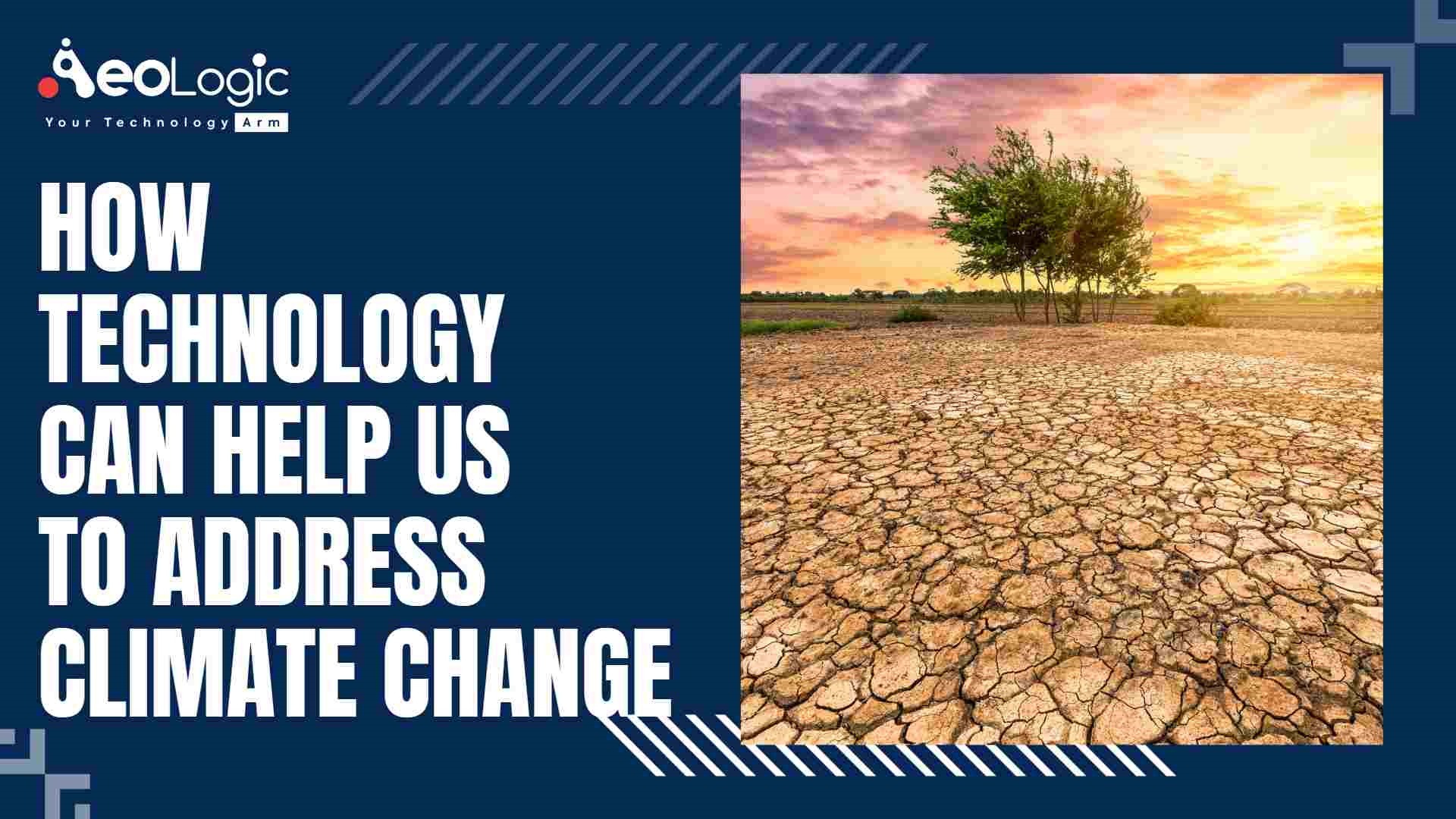People are living more comfortably and conveniently as a consequence of emerging technologies. Taking a car is quicker and much more comfortable than walking or riding a bicycle. However, there is global warming which is a result of the role of technology in climate change. Ranging from riding a horse to getting on a plane. People are beginning to adapt their behaviors to become more reliant on new technology.
People used to prefer conventional technology, which is mostly run by animal and human muscles and emits lesser carbon dioxide than new technology. This blog will look at how present technology is used in constructing and how it affects global warming.
Also read: Role of Artificial Intelligence in Sustainable Cities
The Climate Change Problem
There is a significant increase in the concentrations of “greenhouse gases” (GHGs) in the atmosphere over the past 150 years. Mostly, methane (CH4), carbon dioxide (CO2), and nitrous oxide (N2O). As well as a group of industrial GHGs such as perfluorocarbons (PFCs), hydrofluorocarbons (HFCs), and sulphur hexafluoride (SF6) (SF6).
Greenhouse gases are contributing to the role of technology in climate change. By trapping heat in the atmosphere, which is increasing the global average temperature.
A number of technologies we are using on a daily basis utilize far more resources and power than they should. And their manufacture and usage may cause havoc.
Here are some of the examples of how technology may be harmful to the environment:
Pollution – Generating and utilizing technology may pollute the water, air, heat, and noise.
Consumption of resources – Technology is built with nonrenewable resources, like precious metals like gold. Many others, like coal, are utilized for creating power for technological purposes.
Renewable energy- Even certain renewable energy resources, such as water and trees, are being polluted or depleted faster than they can be replenished because of technological advancements.

Waste – Manufacturing technology produces a lot of waste, and as gadgets and computers malfunction or become old, they are thrown out into the garbage.
These devices, dubbed “technotrash,” are containing a variety of dangerous elements that are highly harmful to the environment.
Ecological disruption – Clearing land where animals previously lived for building industries and allowing pollutants to infiltrate the food chain may have a considerable impact on the natural cycles of the ecosystem.
Health risks – Using hazardous chemicals that are dangerous to human health may lead to cancer. As well as technology addiction will be leading to obesity and carpal tunnel syndrome, among other health issues.
Also read: Digital Solutions That Can Improve Your Sustainability
Role of Technology in Climate Change
Artificial Intelligence of things (AIoT) technologies are crucial for addressing some of the issues around carbon control.
Therefore to reduce the negative role of technology in climate change and to make carbon management more transparent, efficient, and successful. There are three major areas of attention.
AIoT – Measurement and Reporting Integration
With a plethora of systems and databases associated with various carbon-producing assets, the amount of effort and time necessary. In order to merely organise and categorize data from several business units and assets is huge.
This will be enabling an organisation to organise, gather, and turn data into reports for accurate emissions measurement and monitoring. As well as also lowering total data collecting efforts and enhancing data quality and report resolution.
Abatement Intelligence – Predictive Analytics to Simulate Emissions Over Time
The role of technology in climate change also incorporates abatement intelligence. The absence of precise metrics to estimate the emissions arising from particular activities creates abatement planning difficult.
AIoT technology addresses this issue. Which helps in producing insights from real-time data with the help of predictive analytics in order to better predict process emissions.
Furthermore, the role of technology in climate change such as AIoT can improve the performance evaluation of abatement methods. Also, it can help in optimizing emissions estimates by analyzing and learning from data from a number of operations.
Carbon Offsetting and Offset Integration
For meeting worldwide net-zero emissions objectives, with an estimated addressable market size of 200 billion dollars by the year 2050.
However, the industry is beset by concerns such as carbon offsetting certification and market difficulties. Technology is facilitating near-real-time REC validation and providing a marketplace for low-cost, quick carbon offsets.
For instance, offset integration would provide a business with a worldwide pool of offsets. Therefore, easing trade and emissions planning, reducing administrative burden, and optimizing the timings of REC retirement and purchases.
The role of technology in climate change can actively control and mitigate carbon emissions. Hence, enabling governments and companies for meeting their net-zero commitments. Carbon management solutions will be a crucial aspect of emission reductions, powering by strong political, social, and economic objectives.
Furthermore, the real-time measurement, abatement, and offset integration will enable organizations to not only speak the talk. However, actually, walk the walk and achieve their net-zero objectives transparently.
Also read: The Role of Technology in Sustainable Development
Conclusion
Collaborations like this will be imperative for making progress on climate change and the SDGs (Sustainable Development Goals) in general.
The examples in this blow present that there is a growing impetus in the IT sector to address the climate challenge. The role of technology in climate change is certainly an imperative topic for discussion. However, collaborative efforts will scale up and expedite for reaching progress. In order to combat climate change. (royaldentallabs.com)
If you are thinking to take up an initiative for sustainable technology, kindly contact us.





